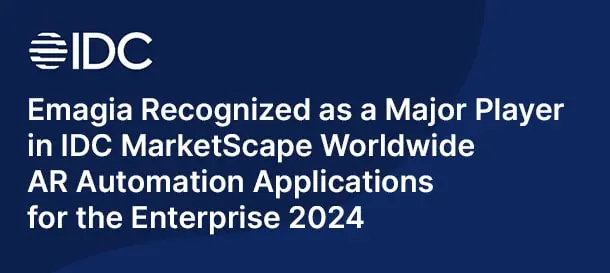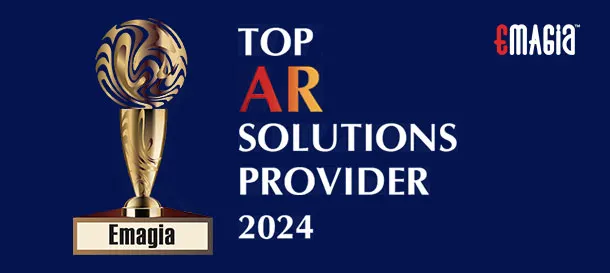Business owners can evaluate the creditworthiness of potential clients or partners through trade references. They give other firms knowledge about a company’s payment history and trade credit utilization, which can assist them in assessing the risk associated with extending credit or starting a business partnership. Companies can minimize bad debt, increase cash flow, and forge enduring connections with reliable partners by carefully considering trade references. For any organization looking to minimize credit risk and increase profitability, it is essential to comprehend how trade references operate and how to use them successfully.
What is a Trade Reference Meaning?
An extensive record of a customer’s interactions with a vendor, including their payment history, is kept in a trade reference. It is an essential tool for organizations to assess credit risk and decide whether to issue credit. A buy can use their financial reputation to leverage a positive trade reference report and better payment conditions from a new vendor, like a longer payment period or a higher credit limit.
Why Should Businesses Ask for a Trade Reference?
Vendors may ask for trade references when a company is trying to start a new trading connection to evaluate potential clients’ worthiness. Trade references can provide important details about previous transactions and payment histories that can shed light on a customer’s propensity for making on-time payments. The possibility of obtaining acceptable payment conditions with vendors can be increased as a business by aggressively giving excellent trade references. Trade references are even more important for smaller enterprises because they frequently rely largely on trade credit as a source of funding. These companies can secure relationships with several vendors and gain access to the resources they require to expand by building a strong trade credit history. Additionally, a positive trade credit history can benefit small businesses.
Trade Credit Advantages and Disadvantages
Corporation references can be given orally, in the form of a letter, or by sharing payment info with business credit reporting companies like Experian, Equifax, or Dun & Bradstreet. A company’s credit score may benefit from consistently favorable trade references, which demonstrate the company’s creditworthiness and dependability in paying payments on time. Trade credit can come with its advantages and disadvantages:
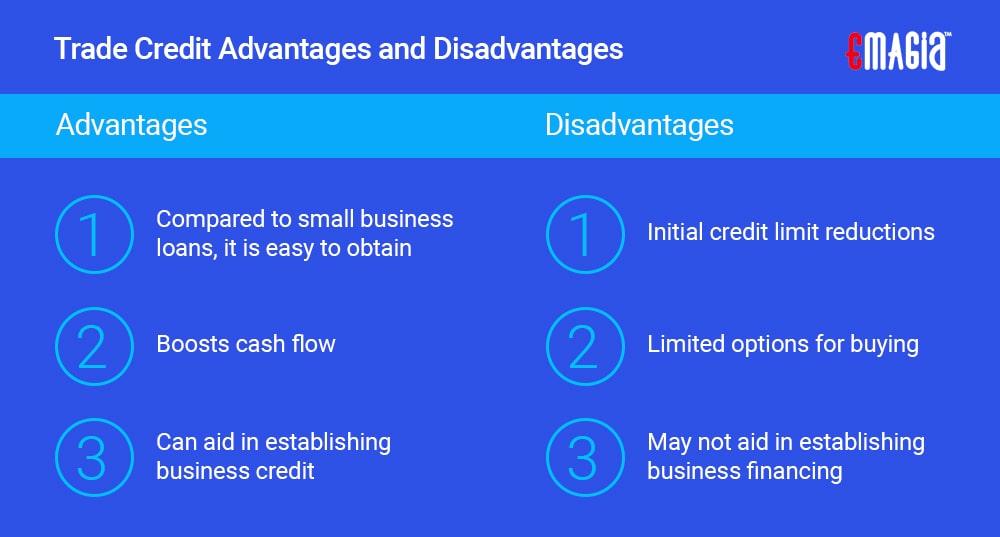
Advantages:
- Compared to small business loans, it is easy to obtain
- Boosts cash flow
- Can aid in establishing business credit
Disadvantages:
- Initial credit limit reductions
- Limited options for buying
- May not aid in establishing business financing
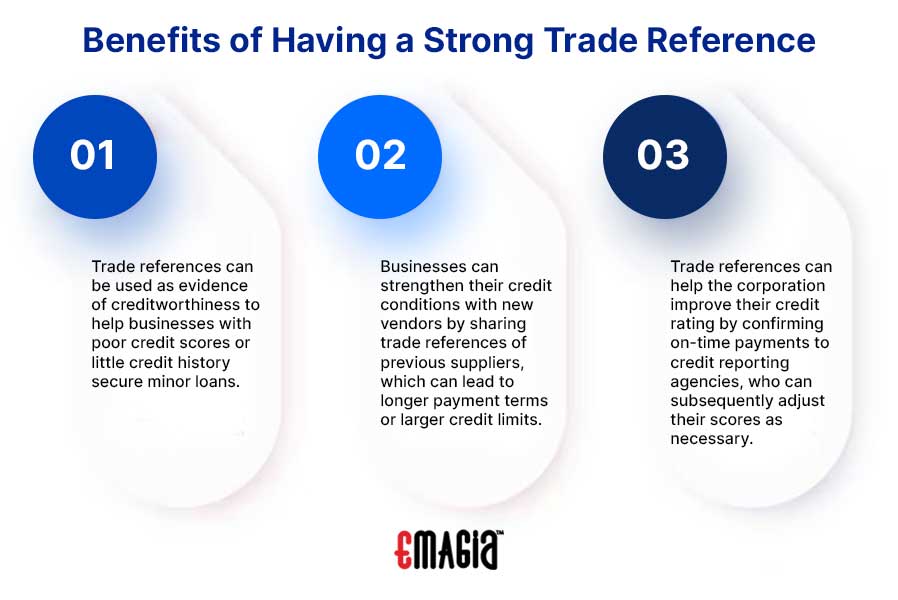
Benefits of Having a Strong Trade Reference?
- Trade references can be used as evidence of creditworthiness to help businesses with poor credit scores or little credit history secure minor loans.
- Businesses can strengthen their credit conditions with new vendors by sharing trade references of previous suppliers, which can lead to longer payment terms or larger credit limits.
- Trade references can help the corporation improve their credit rating by confirming on-time payments to credit reporting agencies, who can subsequently adjust their scores as necessary.
How to Get a Trade Reference?
If a company has established credit lines with suppliers, it may ask for a thorough accounting of all transactions. Requesting a trade reference report from Company B, for instance, would include all order information, payments terms, transactions, and any late payment information if Company A often acquires items from Company B with a net 30 payment term.
More favorable payment conditions may result from having a strong credit history and a positive trade reference. It’s important to keep in mind that not all vendors automatically provides credit histories or trade references to credit bureaus. In order to ensure that the company can improve its credit score, it is crucial to convey the needs for trade reference reports up front.
What is a Trade Reference Example?
Some examples of trade references:
- Customer identification
- Account opening date
- Active AR balance
- Unpaid balance
- Highest previous balance
- Credit limit
- Landscaping company
- Advertising
- Marketing service provider
- Uniform supplier
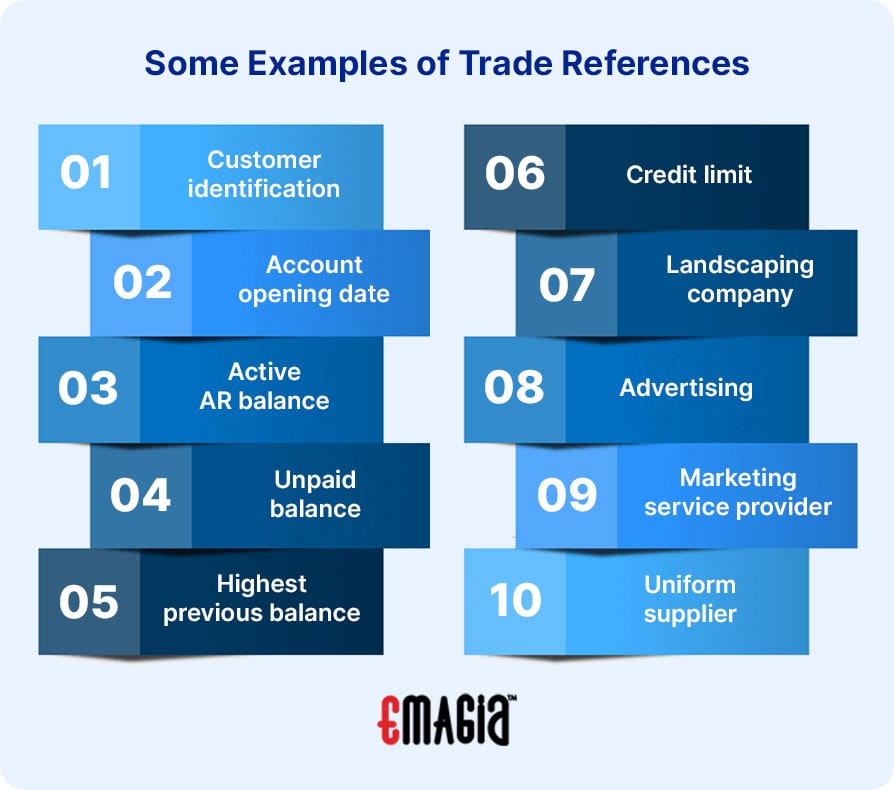
How to Check Trade References?
Businesses should ask for a minimum of three trade references to assess the creditworthiness of a prospective customer.
- Relevance to industry: The trade reference should be from the same industry as the customer in order to compare the customer to other suppliers and appropriately assess a client’s creditworthiness.
- Length of association: it is important to take into account the trade reference’s duration, which is typically seen as being between one and two years. Asking for the start will give you an indication of how long you’ve been working with the provider.
- Credit limit and usage: A customer’s trade reference’s credit limit frequently reflects how creditworthy they are. To determine how much credit to extend, it is also important to look at the highest, lowest, and most recent credit consumption.
- Past due: Look into the customer’s payment history to see if there are any past due balances.
- Payment conditions: an examination of the terms reveals whether or not the vendor had a stringent credit policy. Take note of any added special conditions or reductions to the contract as well.
- Frequency: To determine how much money you may anticipate from a customer, look at how frequently they place purchases and make payments. Additionally, you ought to look up the most recent sale date.
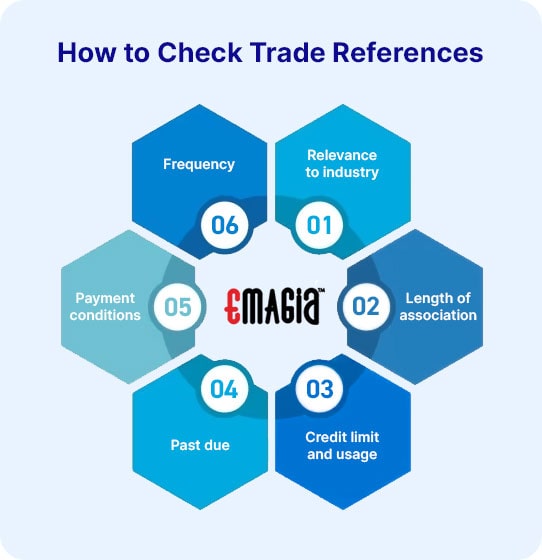
What are the Things to Look for while Submitting Trade References to Credit Agencies?
A great strategy to raise your business credit score is to provide trade references to credit bureaus. However, when sending a trade reference to an agency, it is crucial to bear a few things in mind.
You should first confirm that the business you intend to send the trade reference to sends credit information to the particular credit bureau. This is crucial because if they don’t, the reference you provide might not be accepted. It is also crucial to remember that trade reference reports do not include anticipated payments, such as orders that have not yet been filled. Only prior payments are taken into consideration. It is also important to keep in mind that business references from two different suppliers who are lawfully engaged or who share assets would not be treated differently. This is so that the credit bureau would not mistakenly classify the two sellers as separate businesses.
Additionally, the majority of credit bureaus mandate that the supplier of the trade reference have a credit file. This makes sure that the vendor’s reputation and payment records are confirmed and trustworthy. It is very important to keep in mind that the trade reference may not be taken into consideration if your vendor has a poor reputation or is discovered to be dishonest. The credit bureau may opt to remove the reference from its computations in such circumstances. It is important to fulfill your obligations.

How Trade References are Different than Trade Credit
Trade credit is a contract that permits one company to purchase goods or services from another company without requiring advance payment. Contrarily, the trade reference is a document that reveals how the client handles the credit they get from their suppliers. The two ideas are connected since a customer’s credit standing affects their payment history, which in turn affects whether a vendor is inclined to give a favorable trade reference.
Trade credit is a frequent practice in the business sector that enables businesses to buy items or services that they would not be able to afford upfront. For instance, a small business might not have the money to buy the inventory it needs to meet client demand.
How can Suppliers Streamline the Trade Reference Check Process?
During the onboarding process, manually verifying the trade references of new clients can be a difficult and time-consuming task. However, any mistakes or inaccuracies in this procedure could result in poor credit decisions being made, which would raise the risk of bad debt and negatively impact the company’s cash flow and DSO (days sales outstanding).
Conclusion
In conclusion, trade references are critical for determining a company’s creditworthiness and are crucial for raising credit scores. Businesses can improve their payment terms with suppliers, qualify for minor loans, and expand their operations by offering precise and pertinent trade references. Making educated credit decisions requires careful consideration of trade references, which should be evaluated for quantity, relevance, length, credit limit and utilization, payment conditions, and regularity. While manually checking trade references can take time, it is necessary to guarantee that the data is reliable and accurate. Trade references are a useful tool for firms to build and maintain strong credit and financial health overall.

FAQs
What if I Do Not have Any Trade References?
If you do not have any trade references, you have poor credit terms and high-interest rates on your loans.
Who should I list as a Trade Reference?
Businesses that give credit to customers like banks and lending institutions.
Who should I not list as a Trade Reference?
Relatives, one who you have not worked with, one who you have not talked to in a long time.
Are Customer lists Trade Secrets?
Yes, it can be a secret if it holds private information about a client.
What are some Trade Secrets?
KFC’s original recipe, Coca-Cola’s recipe formula, and other patents and trademarks.

